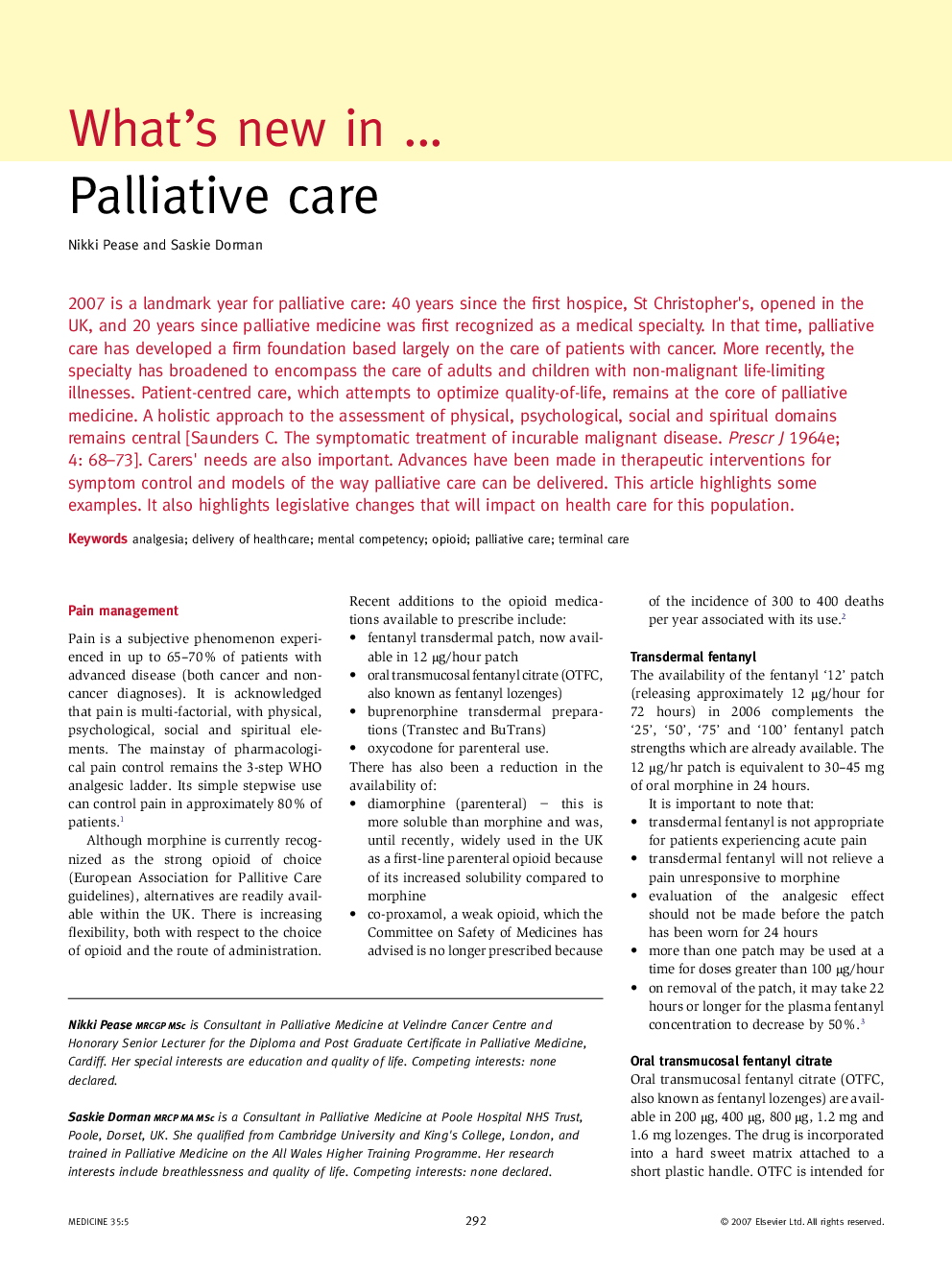| Article ID | Journal | Published Year | Pages | File Type |
|---|---|---|---|---|
| 3807988 | Medicine | 2007 | 4 Pages |
2007 is a landmark year for palliative care: 40 years since the first hospice, St Christopher's, opened in the UK, and 20 years since palliative medicine was first recognized as a medical specialty. In that time, palliative care has developed a firm foundation based largely on the care of patients with cancer. More recently, the specialty has broadened to encompass the care of adults and children with non-malignant life-limiting illnesses. Patient-centred care, which attempts to optimize quality-of-life, remains at the core of palliative medicine. A holistic approach to the assessment of physical, psychological, social and spiritual domains remains central [Saunders C. The symptomatic treatment of incurable malignant disease. Prescr J 1964e; 4: 68–73]. Carers' needs are also important. Advances have been made in therapeutic interventions for symptom control and models of the way palliative care can be delivered. This article highlights some examples. It also highlights legislative changes that will impact on health care for this population.
